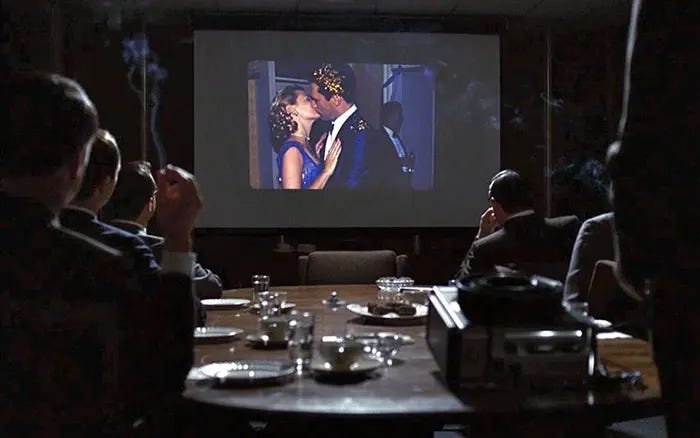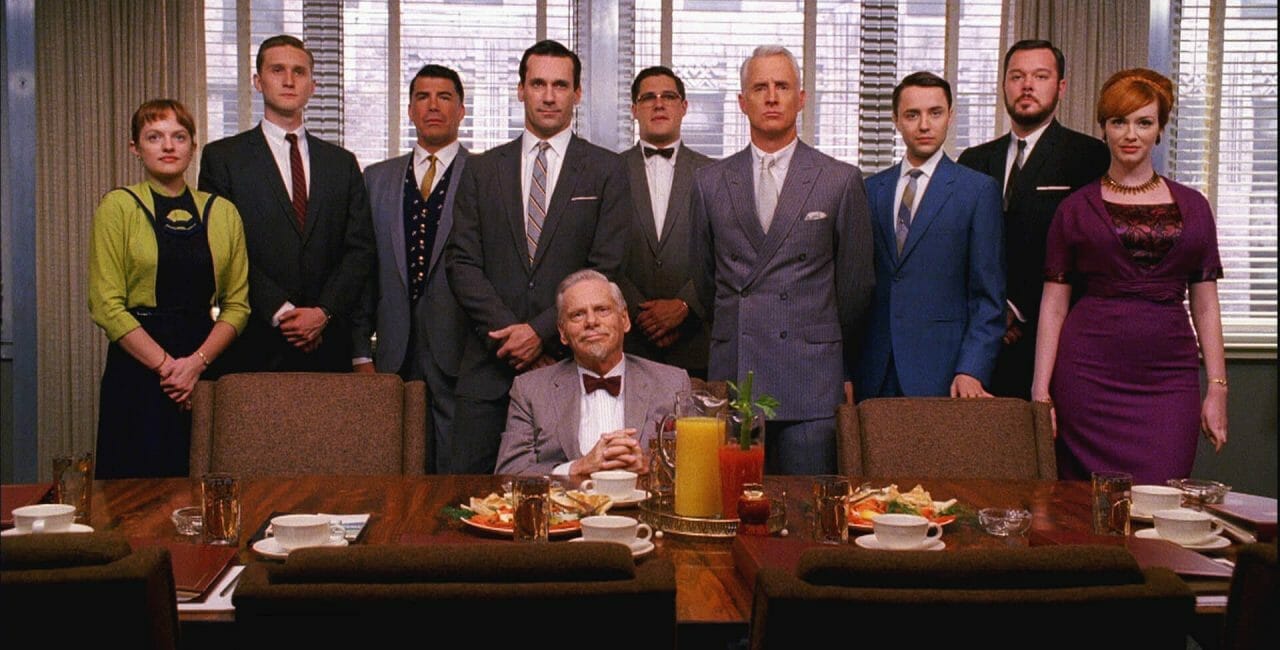Note: This was a piece I wrote last year, for a magazine on the theme of nostalgia. Nothing fits the theme better than the Carousel pitch in Mad Men, a show that I finished around the beginning of 2021. I now count it as one of my all-time favorites, and I just rewatched the first season. It has the greatest pilot I’ve ever seen, and the series finished it like a swan song. I really like reading this piece. The issue has been released as a digital copy, and what you are reading here is the uncut version, which I feel is the definitive version. Enjoy!
And if you feel that you need to catch up on the show, spoilers abound.
Advertising relies on nostalgia, in a way that bread needs its butter. It breeds a new and perpetual wave of branding, that requests the viewer to bask in the glory days of its product. When Nintendo released a commercial in 2019, featuring two brothers growing up with the console, it is simple and harmless on the surface. There are references to Zelda and Super Mario Bros. The video game industries are larger than ever, but the ties are what bring them together. It’s a creative and commercial success for the agency producing such an idea.
The Carousel is either a spaceship or a time machine. In the eyes of Mad Men and its protagonist Don Draper, it’s the latter and that’s how he began his pitch. Kodak’s photo wheel was innovative for its time. While its mere function is showcasing a family album, it is a masterclass of design and economy. But the analog projector is about as appealing as a calculus lesson. The product doesn’t receive any attention though. It’s the idea surrounding it. For Draper, it has strong ties to the past, rather than the future. That’s because, for the future, he witnesses an emptiness that’s possessed himself to his job and family. Draper became the man who sold the world.
The Carousel speaks volumes about the characters in Mad Men, the television drama created by Matthew Weiner about the lives of advertising executives in Madison Avenue during the 1960s. Don Draper is the creative director of Sterling Cooper, and his pitches have scored the agency a lot of home runs among clients. Thanks to him, Lucky Strike, a tobacco company with waning popularity, remained popular. Kodak successfully sold their photo wheel to the public with Draper’s words about nostalgia put top to bottom. It’s tempting to use the show as a cynical critique of advertising, putting the man as a scapegoat for most of the decade’s societal ills. But it’s rich in complexity and delicate care for its characters, that you’ll forget their facade.
Anna Khachiyan, a social critic and podcaster, once said of The Sopranos, a show that Matthew Weiner had written for, is about a middle-aged schlub - who happens to be a mob boss - walking through the End of History. Likewise, Mad Men sees a man walking through the turbulence of the 60s when America moved away from the rigid mores of the decade before being more open to a radical and progressive outlook that is already cemented today. But Don Draper is not simply an everyman. He is the Modern Man, born out of poverty and into the lust of urban living. In The Wheel, one of the show’s best episodes, there’s a truth that Weiner touches on the men others want to emulate. For him, the past will always prevail in the present.
Beneath the smoke-misted glamour of suits and pencils skirts and the tasting of hard liquor, there’s another version of Draper they don’t see, but we do. He was Dick Whitman, growing up with abusive foster parents during the Great Depression. His way out of poverty is to take the identity of his fellow soldier during the Korean War, creating the veneer of Don Draper. As his marriage with Betty begins to fall apart, he has frequent affairs with various women, given that it’s a median of Sterling Cooper’s culture. He cannot partake in a family vacation, because he had prepared for thiscrucial meeting with Kodak. Earlier in the show, he meets his long-lost brother Adam and refuses to reunite with him. As tragedy occurred, Draper realizes it’s too late.
During the pitch Draper provokes the word ‘nostalgia’, noting its Greek deviation that meant ‘the pain of an old wound’. The Carousel showcases his family as a happy one. These are memories he physically possesses as photographs, and it tells another story. It’s material that he holds onto because it is all he has. In effect, it’s a story about a robust and happy nuclear family viewed by millions of Americans. What they like to see and hear is better than the harsh reality of life. Familiarity is evoked, rather through the nuclear family, but brands.
Weiner grabs our attention with Draper, but his other characters aren’t uninteresting. There’s Peggy Olsen, a junior copywriter who started as Don’s secretary. Alongside is Joan Holloway, the agency’s office manager who has more of an advantage in controlling her female subordinates. Both women, more or less, have overcome the patriarchal obstacles of their positions. Then there’s Pete Campbell, an ambitious junior accounts executive who overzealously looks up to Don, and Roger Sterling, the agency’s founder, whose crude, yet witty one-liners alleviate the show from being too heavy. While all these were people at the top of the game, they have their fair share of existential struggles. Campbell hails from a family dynasty and is seen as lesser; Peggy’s youth is seen as a detriment to her Catholic mores; Joan and Roger had affairs so many times, it almost ruined their professional relationships.
Mad Men is not sentimental for its time and its prejudices. Sometimes, historical events would have a direct impact on these characters while they occur in the background. During one episode, Sterling Cooper’s employees were looking forward to Richard Nixon being victorious in the 1960 Presidential Election before John F Kennedy took the spoils. Critics mainly see this as a strength. Meanwhile, the show’s detractors feel that how it depicted the 1960s, was so that their audience - usually elitist yuppies wishing they could be more sophisticated - and their moral values, are flattered by being juxtaposed to the primitivism of its characters. In Commentary Magazine, Sam Schulman lists the many things in the show that aren’t commonplace today, as if they’re naturally creative ruts; smoking and drinking in the workplace are frowned upon today, but those things weren’t if you were in Draper’s era. Men were self-satisfied pigs who sleep around, while the women were subservient and struggled to get the same amount of respect.
While it barely had large ratings, Mad Men is more interested in being a conversation starter. There’s certainly an elitist audience that Clive James hinted in his essay about the show, that would have taken the past for granted. Yet what makes it revelatory is the withering of traditional norms that were the core of American society, from the least rose-tinted lens of the most modern man. At the end of Carousel, Don arrives too late at his family home, realizing that they left for the vacation he promises to catch on with. There lays brings a man with empty connections. A photo wheel compensates for that loss.



